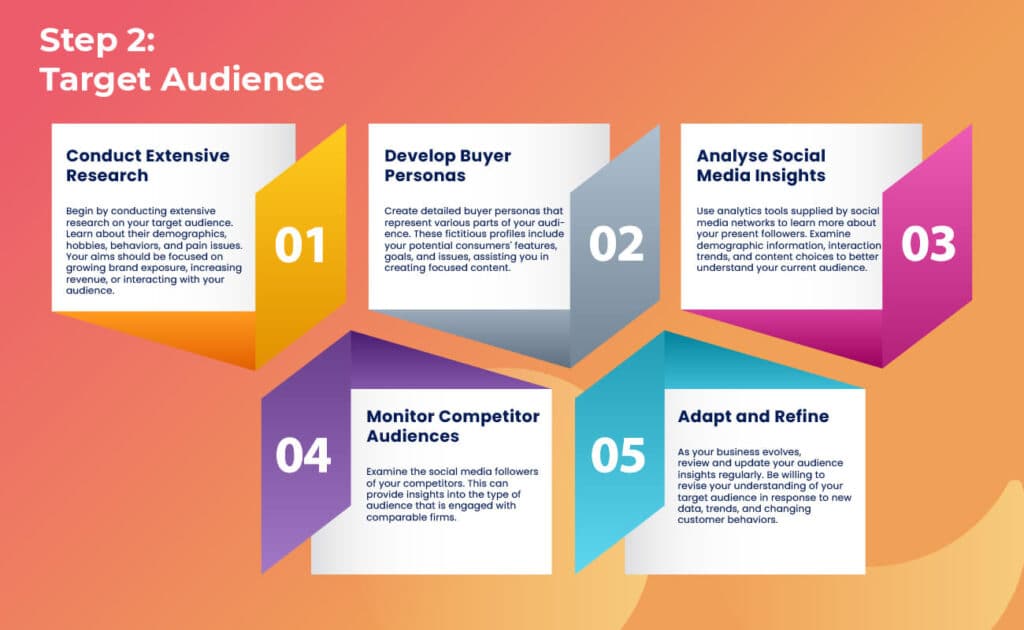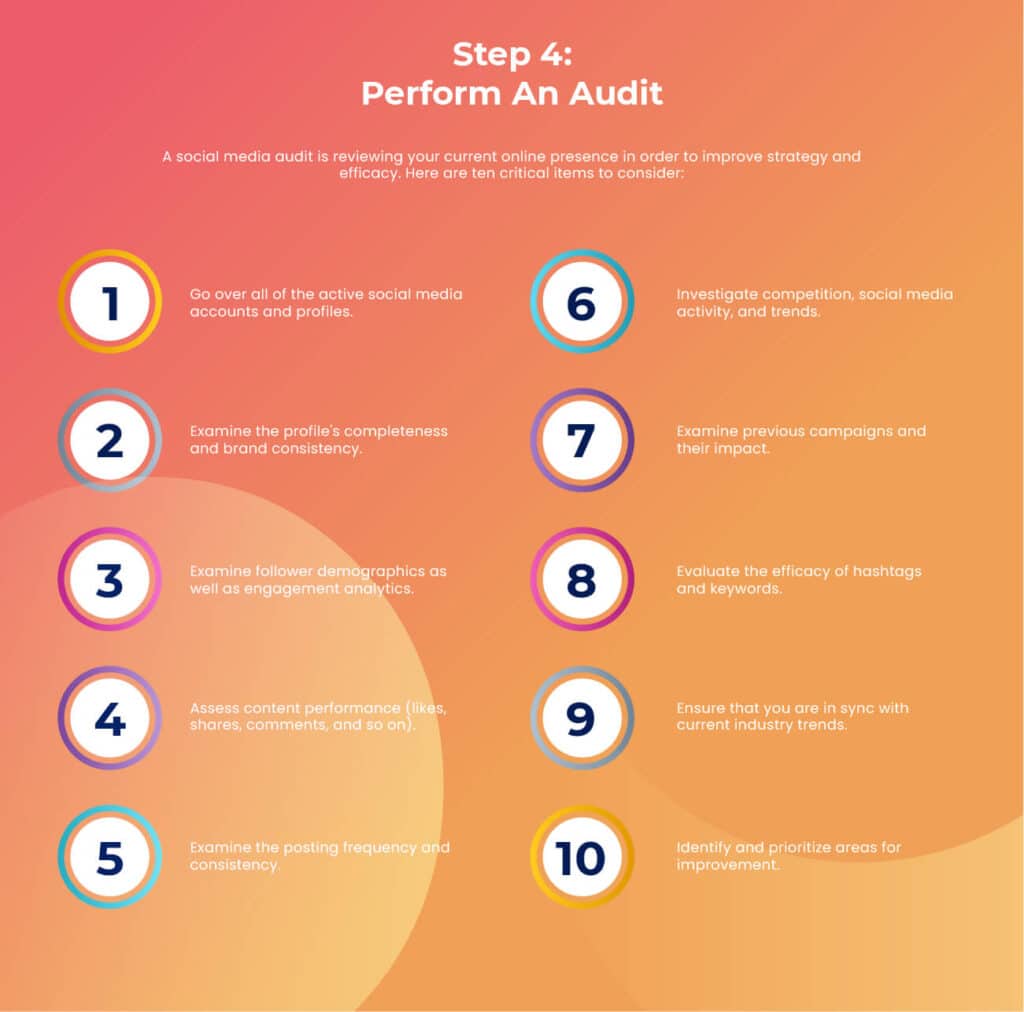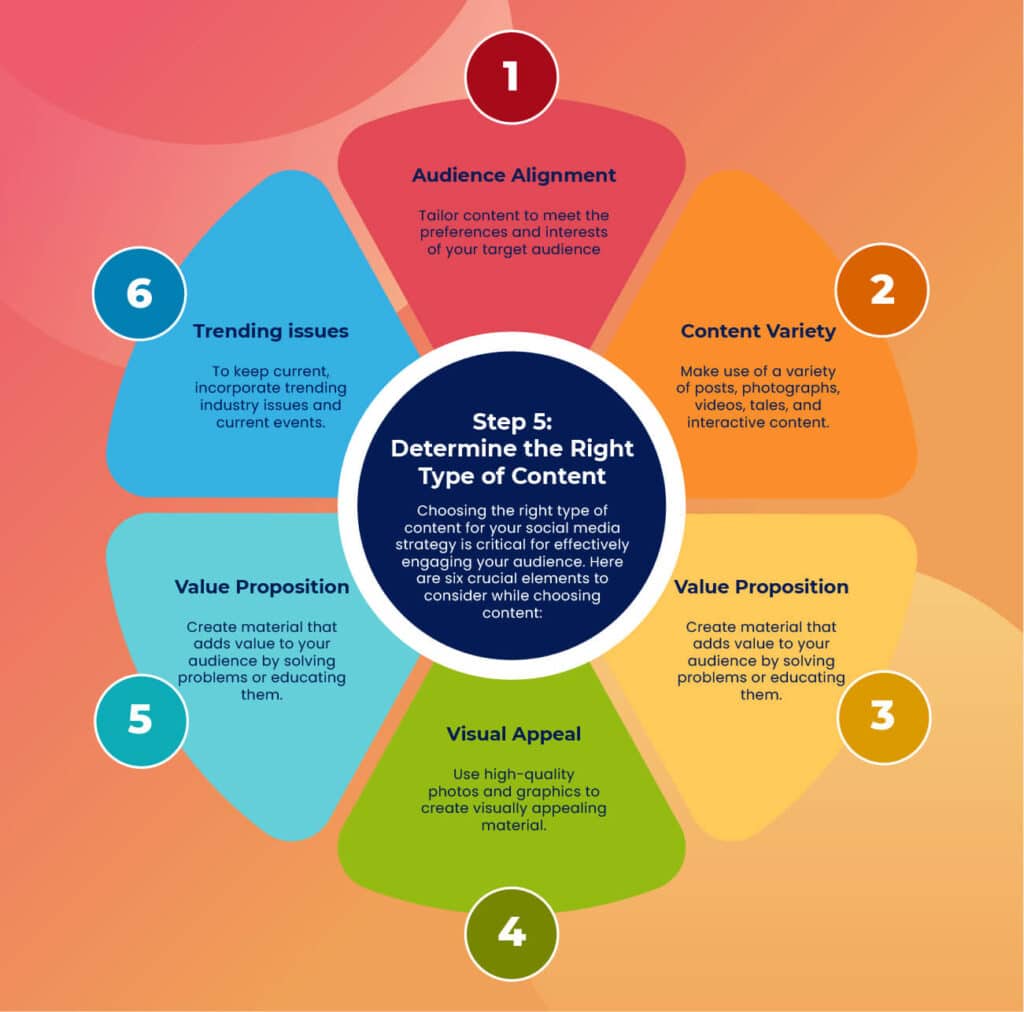A robust social media presence has become a cornerstone for business success in today’s digital age. However, more than simply publishing infrequently will be necessary. To effectively leverage the power of social media, you must have a well-defined strategy that matches your goals and resonates with your target audience. We’ll coach you through six crucial steps to developing a solid social media marketing plan that produces results in this guide.
1. Set Clear and Measurable Goals
Setting clear and quantifiable goals is the core of any effective plan. Are you looking to increase brand exposure, website traffic, lead generation, or sales? Use the SMART criteria to define your goals: Specific, Measurable, Achievable, Relevant, and Time-bound. This clarity will guide every part of your plan.
Setting specific, quantifiable goals is critical in developing an effective social media marketing strategy. Begin by creating clear goals that explain your desired outcomes, such as raising brand awareness or increasing website traffic. Attach quantifiable measurements that allow you to track progress and success to these objectives to make them actionable. Rather than aiming for broad changes, seek to “increase engagement by 20% in the next quarter.” Importantly, connect your social media goals to your overall business goals. This alignment guarantees that your social media initiatives contribute significantly to your company’s overall performance through revenue growth, client retention, or other essential business objectives.
2. Know Your Target Audience:
Understanding your target demographic is essential for developing content that will resonate with them. Investigate their demographics, hobbies, problems, and internet behavior. Create buyer personas to acquire a comprehensive understanding of their preferences. This understanding will help shape your content and interaction initiatives, ensuring your message reaches people correctly.
Defining your target audience is a crucial step in developing a successful social media strategy. It starts with rigorous research to understand your target audience’s demographics, interests, behaviors, and pain concerns. Developing thorough buyer personas refines this insight, allowing you to adapt content and marketing to specific segments. Social media analytics tools reveal demographic data, interaction patterns, and content preferences about your present following. Furthermore, researching your competitors’ audiences can reveal new segments you may have yet to consider. As your company grows, examine and alter your audience insights to keep up with recent trends and client behaviors. This ongoing modification guarantees that your social media approach remains adequate and relevant to the needs of your target audience.
3. Choose the Best Social Media Platforms:
Different platforms appeal to different types of audiences and content. Examine how your target audience spends their time and adjust your plan accordingly. LinkedIn may be more beneficial for B2B firms, while Instagram may be more effective for visually appealing brands. Concentrate your efforts where they will have the most significant impact.
Each social networking site has its own set of advantages. Facebook allows for broad audience involvement as well as tailored advertising. LinkedIn is geared toward professional networking and industry knowledge. Instagram is particularly good at visual storytelling for younger people. Pinterest both inspires and guides traffic. Twitter offers real-time updates and brief exchanges.
4. Perform an Audit:
Before you dive in, evaluate your present social media presence as well as the methods of your competitors. Conduct a SWOT analysis (Strengths, Weaknesses, Opportunities, and Threats) to discover gaps and areas for improvement. Learning from both your achievements and failures can help shape your future strategy.
A social media audit entails a thorough examination of your current online presence. This includes analyzing follower demographics and engagement metrics, scrutinizing content performance and posting frequency, reviewing competitor strategies, assessing the impact of previous campaigns, optimizing hashtags and keywords, aligning with industry trends, and ultimately identifying improvement opportunities to improve your overall social media strategy.
5. Determine the Right Type of Content:
Content is critical, and it must be tailored to your audience. Determine the appropriate material types based on your objectives and audience preferences. Combine postings, photographs, videos, tales, and interactive components like polls or quizzes. To effectively engage your audience, provide value, elicit emotions, and solve problems.
The key to attracting your audience on social media is to create the correct type of material. It all starts with aligning your content with your target audience’s tastes and interests, ensuring it resonates with them. It is critical to embrace content diversity since a mix of posts, photographs, videos, tales, and interactive components keeps engagement levels high. Furthermore, your material should have a value proposition – it should either provide solutions, educate your audience, or offer something helpful to them. Visual attractiveness is also essential; high-quality photographs and graphics improve the attraction of your material. Another critical aspect is platform relevance; tailoring material to each social site’s distinctive structure and style maximizes its impact.
6. Monitor Performance and Adapt:
Once your approach is in motion, it must be constantly monitored. Monitor critical indicators, including engagement, click-through rates, follower growth, and conversions. Analyze the data to determine what is working and needs to be tweaked. Because social media algorithms and trends fluctuate, be prepared to alter your strategy based on data-driven insights.
It is critical to continuously analyze and change your social media strategy depending on data. Analyze audience behavior and demographics and use analytics tools to track engagement metrics. Determine the best-performing content kinds and publication periods. Iteratively adapt your strategy, optimizing content and schedules for better results and alignment with your audience’s changing preferences.
Conclusion:
Creating a solid social media marketing plan is a dynamic process that requires constant tweaking. Setting clear goals, understanding your audience, selecting the correct channels, completing regular audits, curating compelling content, and remaining data responsive can equip you to traverse the ever-changing social media world effectively. Remember that honesty and consistency are the cornerstones of developing a devoted online community that supports the growth of your business.













